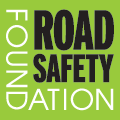Making Roads Safer
EuroRAP aims to help prevent crashes and to make those that do happen survivable. Although it is unlikely that absolute safety will ever be achieved, preventable deaths that happen time and time again on the same roads must not be tolerated.
In the past, because human error contributes to nearly every crash, road safety policy has been focused on ‘fixing the driver’. Many drivers are foolish or inexperienced so driver training and education programmes – for example, on wearing seat-belts – are crucial. Some drivers behave with criminal disregard for the safety of others and should expect tough policing and tough penalties.
However, most crashes happen when ordinary people make mistakes – around 1 in 500 driving decisions can be wrong and the results can be tragic. Responsible, law-abiding drivers frequently die on our roads because they unexpectedly face a momentary situation with which they cannot cope. Drivers might also experience a brief lapse in concentration, but they should not pay for this with their lives. Safe roads minimise the chance of these situations arising, and if they do occur, they minimise the severity of the crash.
Protecting against human error is well understood in rail, aviation and workplace safety. Unfortunately, this is not the case with roads.
EuroRAP’s model for reducing death and injury aligns closely with Sweden’s ‘Vision Zero’ and the Dutch ‘self-explaining road’. It is based on roads and vehicles that have forgiving designs so that when a crash does happen, both road and vehicle work together to cushion against injury.
